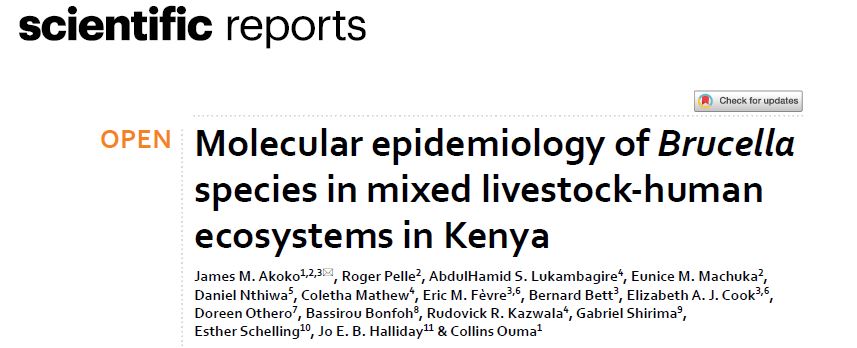
0727 933950 |
Info@embuni.ac.ke
- Home
- About Us
- Academics
- Admissions
- Library
- E-Learning
- Publications
- Media
A new study has revealed that there are two species of Brucella bacteria (B. abortus and B. melitensis) found in cattle, camels, sheep and goats. The study also found that humans were also infected by these 2 Brucella species, suggesting that contact with infected animals as well as intake of meat and other products from these animals could be playing a major role in the transmission of Brucellosis. The findings also suggest that camels were more likely to test positive for the two Brucella species than other animals due to high migration frequency which facilitates the sharing of grazing areas and watering points with other livestock.
Brucellosis is a bacterial disease that is caused by a group of bacteria from the genus Brucella and infects both humans and livestock. The disease can be spread through the eating of raw contaminated animal products, particularly milk, and contact with fluids of infected animals during birth, as well as contact with aborted materials or placenta. Brucellosis remains a major problem in Kenya causing huge livestock production losses resulting from abortion, infertility, and reduced milk yield, while humans suffer from a long and debilitating illness characterized by fluctuating fever.
This research was carried out by a team of researchers and scientists from the University of Embu, Kenya; Sokoine University of Agriculture, Tanzania; Biosciences Eastern and Central Africa-International Livestock Research Institute (BecA-ILRI) Hub Kenya; Centre Suisse de Recherches Scientifiques, Côte d’Ivoire; Nelson Mandela African Institute of Science and Technology, Tanzania; University of Liverpool, UK; Vétérinaires Sans Frontières Suisse, Switzerland; University of Glasgow, UK; Afrique One-ASPIRE, Côte d’Ivoire; Maseno University, Kenya; and the International Livestock Research Institute (ILRI), Nairobi, Kenya. This study, whose results were published in Scientific Reports, was conducted in the pastoral areas of Narok and Marsabit Counties in Kenya and aimed at identifying Brucella species circulating among livestock and human populations in these two counties. These two counties were selected due to their high numbers of livestock kept in close contact with humans under a nomadic pastoralism system.
The study established associations between Brucella species and the different vulnerable hosts and found evidence of possible cross-transmission of Brucella species in areas where close interaction between different animals occurs.
The study also revealed that congregation of different animal species around communal watering points, keeping of mixed herds, and sharing of grazing sites increased the chances of cross-transmission of the 2Brucella species.
The researchers also noted that, in the two counties, individuals aged 21-40 years are more likely to test positive for Brucella due to their primary responsibility of herding, milking, and helping animals give birth. This predisposes them to exposure compared to those below 21 years.
The findings from this study will enable animal and human health experts to better understand the epidemiology of Brucellosis and develop targeted control programmes for the disease. The detection of the two Brucella species in humans and animals highlights the importance of One Health prevention strategies that target multiple host species, especially in the multi-host livestock populations.
Citation: Akoko, J. et al., 2021. Molecular epidemiology of Brucella species in mixed livestock-human ecosystems in Kenya. Nature Scientific Reports, 11(1), 1-11. https://doi.org/10.1038/s41598-021-88327-z